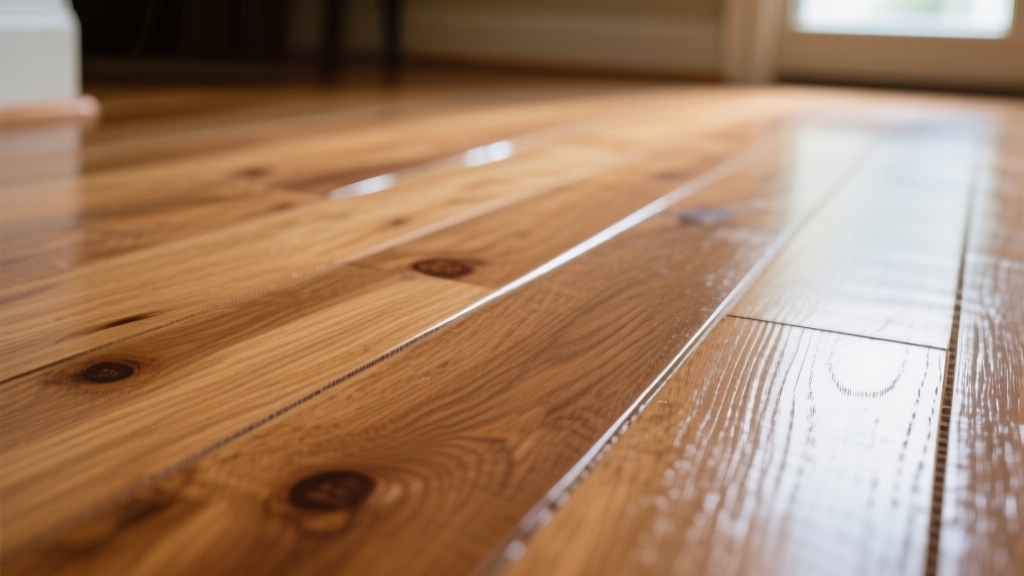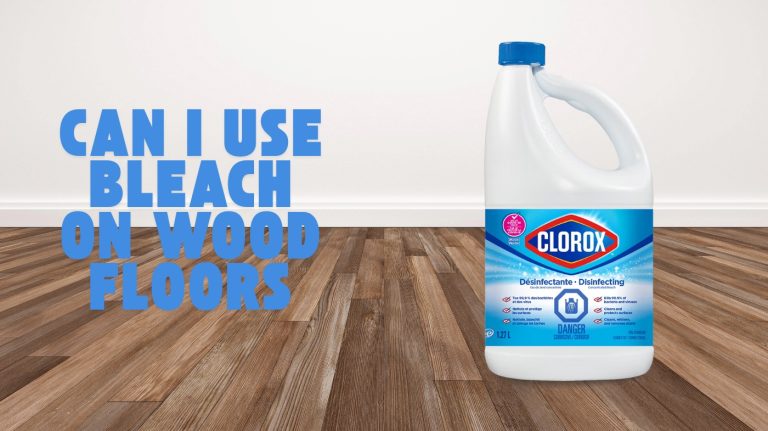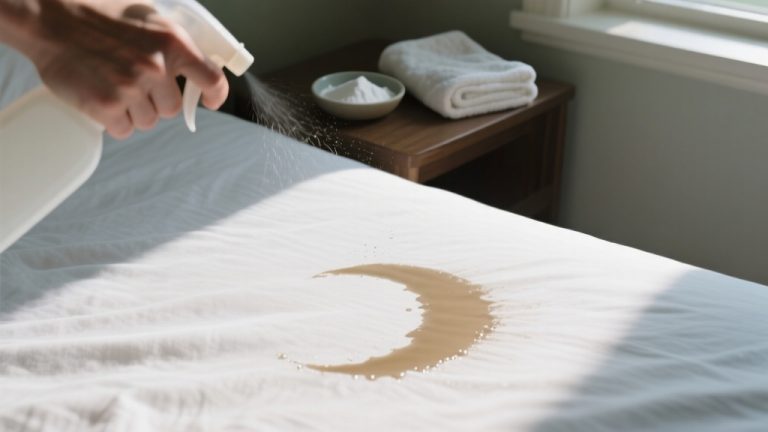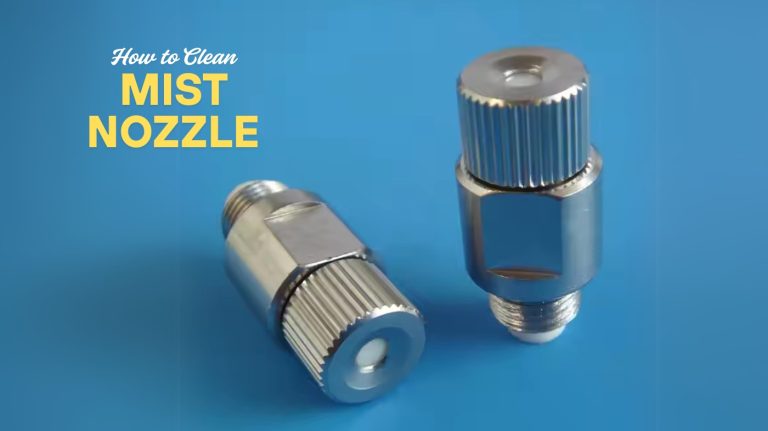What Is a Sealed Hardwood Floor? Expert Insights Inside
A sealed hardwood floor is real wood coated with a protective finish that guards against moisture, stains, and wear.
This sealant creates a durable barrier, enhancing the floor’s resistance to scratches, discoloration, and damage.
You’ll find various sealant options like polyurethane or natural oils, each offering different durability and appearance.
Whether factory- or site-finished, sealing extends your floor’s lifespan and ease of maintenance. Understanding these details can help you choose the best option for your space.
Key Takeaways
- A sealed hardwood floor has a protective finish applied to its wood surface to resist stains, moisture, and wear.
- Sealants include polyurethane, penetrating oils, hard wax oils, and aluminum oxide, each offering different durability and appearance.
- Sealing prevents wood damage from spills, scratches, moisture intrusion, and sunlight fading, extending floor lifespan.
- Factory-finished floors come pre-sealed with durable coatings, while site-finished floors are sealed after installation.
- Proper sealing enhances floor appearance, simplifies maintenance, and increases a home’s value and market appeal.
Definition and Purpose of Sealed Hardwood Floors

While hardwood floors offer natural beauty and durability, sealing them is essential to protect your investment and extend their lifespan.
A sealed hardwood floor features a real wood top layer, either solid or engineered, coated with a protective finish that forms a barrier against physical and environmental damage.
This sealant, applied either in the factory or on-site, typically uses polyurethane or oil-based finishes to resist stains, moisture, and wear. Using the right protective finishes significantly improves the floor’s resistance to daily wear and tear.
Without sealing, wood absorbs spills and dirt, leading to immediate damage. Sealing helps prevent moisture absorption, maintaining structural strength.
Sealing protects against scratches, moisture intrusion, and sunlight fading. It also simplifies cleaning and maintains the wood’s appearance.
Types of Sealed Hardwood Floors
Because hardwood floors require protection tailored to their usage and aesthetics, various sealing types have been developed to meet specific needs. You’ll find these primary options:
- Polyurethane – Forms a tough surface film resisting scratches and moisture. Water-based dries quickly with a clear finish; oil-based offers richer color and superior durability but emits stronger fumes. It also extends the overall lifespan of hardwood floors through added durability.
- Penetrating Oil – Soaks into the wood grain, enhancing texture without a surface film. It provides a natural look but needs reapplication every few years and is less scratch-resistant.
- Hard Wax Oil – Combines oils and waxes to penetrate and protect with a matte or satin appearance. It’s low maintenance but less durable than polyurethane, requiring periodic buffing and reapplication.
Each type balances durability, appearance, and maintenance to suit different hardwood floor demands.
Advantages of Sealed Hardwood Flooring
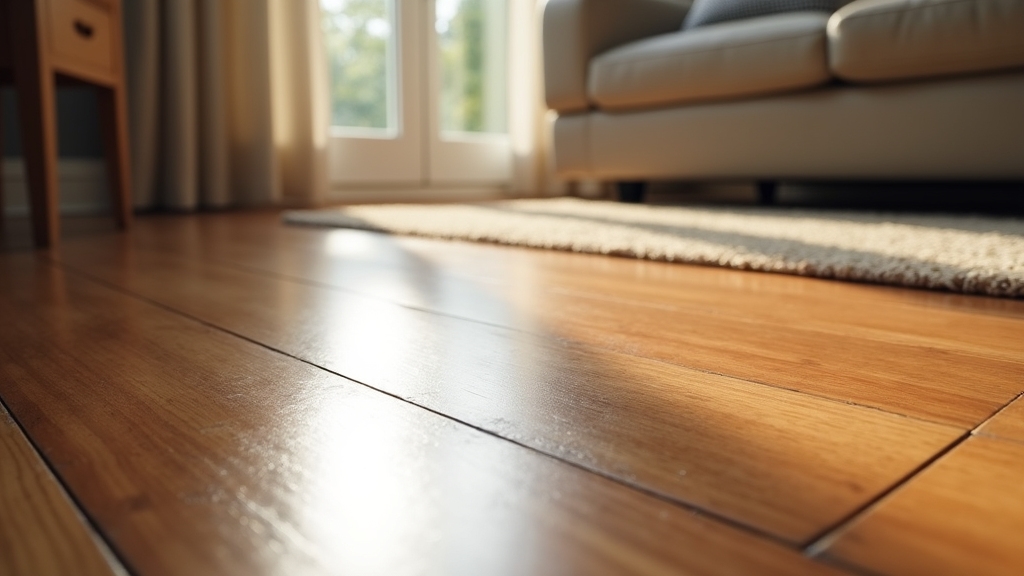
Sealing applies a durable, factory-cured finish, often UV-cured polyurethane or aluminum-oxide infused, that creates a hard protective layer resistant to scratches, dents, moisture, and stains. This substantially extends the floor’s lifespan by preventing warping and discoloration while reducing maintenance frequency to once every 15–30 years.
The factory-controlled finish ensures uniform color, sheen, and micro-beveled edges for consistent, attractive aesthetics. Additionally, sealed surfaces resist allergen accumulation and simplify cleaning, improving indoor air quality.
Sealed floors arrive fully finished, enabling immediate use without on-site sanding or curing, which accelerates installation and lowers labor costs. Prefinished hardwood flooring is factory-sanded, stained, and coated, which contributes to the high durability and ready-to-use nature of sealed floors.
These combined advantages make sealed hardwood flooring a durable, convenient, and hygienic option for long-term performance. Regular maintenance with non-abrasive cleaning methods is recommended to preserve the finish and prevent damage over time.
Different Sealant Options and Their Features
When it comes to choosing a sealant for your hardwood floors, you have a couple of solid options. For instance, water-based sealants are pretty popular because they dry quickly and do a great job of keeping your floor’s natural color intact. That’s a huge plus if you want to maintain that original look!
Bona ClassicSeal, for example, provides a natural, blonde look with minimal tinting on lighter floors, preserving their natural appearance. Water-based sealants also tend to be easier to clean up and emit fewer fumes compared to oil-based options, making them a safer choice for indoor use.
On the flip side, we’ve oil-based sealants. These guys take a bit longer to dry, but they bring a lovely warm amber tone to the wood, which many people find appealing. So, you really have to think about what look you want for your floors. Oil-based polyurethane is known for its high durability and resistance to wear, which makes it ideal for areas with heavy foot traffic.
Now, let’s talk durability. Oil-based polyurethane tends to shine in high-traffic areas, often outperforming water-based options. But keep in mind, the maintenance routine might differ between the two. It’s all about finding the right balance for your space.
Understanding these trade-offs is key to selecting the best sealant for your hardwood floor’s longevity and appearance! Additionally, Bona waterborne sealers offer a flexible 48-hour open time that allows for less rushed application and fewer mistakes.
Water-Based vs Oil
When selecting a sealer for hardwood floors, understanding the fundamental differences between water-based and oil-based options is essential.
Water-based sealers use waterborne urethanes or acrylics, dry quickly (2–4 hours), and maintain wood’s natural color with low VOC emissions. They also facilitate easier cleaning and maintenance over time, making them a practical choice for many homeowners. Additionally, these sealers are known for their environmentally friendly properties due to low chemical emissions.
Oil-based sealers contain urethanes or natural oils, dry slowly (24–48 hours), and impart amber tones while emitting higher VOCs.
Consider these factors:
- Appearance: Water-based sealers dry clear, preserving wood color; oil-based deepen warmth with amber hues.
- Application: Water-based require thin, even coats to avoid lap marks; oil-based allow thicker coats but need mineral spirits for cleanup.
- Environmental Impact: Water-based sealers have low VOCs and minimal odor; oil-based sealers release stronger fumes and require longer ventilation.
Choose based on your priorities for appearance, application, and indoor air quality.
Durability and Maintenance
Although sealants vary widely in composition and performance, understanding their durability and maintenance characteristics helps you select the best option for your hardwood floors. Bona’s water-based sealers, for example, offer a range of finishes from natural to amber tones, each designed to enhance wood character while providing ease of maintenance through their open time flexibility.
For instance, aluminum oxide coatings deliver exceptional long-term wear but may look plasticky. Moisture-cured polyurethane offers superior moisture resistance ideal for humid spaces.
Maintenance demands also differ; oil sealers penetrate deeply but need recoating every few years and have long drying times. Water-based finishes dry faster and emit fewer VOCs, easing upkeep.
| Sealant Type | Durability & Maintenance Features |
|---|---|
| Aluminum Oxide | Very hard, durable; plasticky look |
| Moisture-Cured Poly | High moisture resistance; suitable for humid areas |
| Oil Sealers | Deep penetration; recoat every 2 years; slow drying |
| Water-Based Finishes | Fast drying; low VOC; easier maintenance |
Factory-Finished vs Site-Finished Hardwood Floors
While both factory-finished and site-finished hardwood floors provide durable and attractive options, they differ markedly in installation processes, customization capabilities, and finish characteristics.
Factory-finished floors arrive pre-sanded, stained, and sealed in a controlled environment. This allows installation to complete in 4 to 6 days with immediate usability. Factory finishing reduces overall installation time compared to on-site finishing. It is important to ensure regular maintenance to preserve the finish and prevent hazards such as excessive grease buildup.
Site-finished floors are installed raw and finished on-site, requiring 2 to 3 weeks including curing. However, they enable full customization and a seamless surface without beveled edges.
Key differences include:
- Installation time and disruption: factory-finished is faster and less disruptive.
- Finish consistency vs. customization: factory-finished offers uniformity; site-finished allows bespoke colors and textures.
- Longevity and maintenance: factory-finished has a thick, durable finish; site-finished permits multiple refinishes over time.
The Sealing Process Explained
Choosing between factory-finished and site-finished hardwood floors influences how the sealing process is managed.
Regardless of the type, sealing remains a vital step to protect and enhance the floor’s appearance.
You start by thoroughly cleaning, repairing, and sanding the floor to guarantee a smooth surface free of debris. Prepare the Surface is crucial to ensure the epoxy used to fill cracks and holes adheres properly. Proper surface preparation is similar in importance to cleaning unlacquered brass, where removing dirt and oxidation ensures the best results when applying protective coatings.
Applying sealant, typically polyurethane, penetrating oil, or hard wax oil, in thin, even coats along the wood grain is essential.
Use brushes for edges and rollers for large areas, applying three to four coats with drying and light sanding between each.
The drying phase takes 2 to 4 hours, with full curing spanning several days.
During this time, you must avoid foot traffic to guarantee durability, moisture resistance, and a flawless finish that protects your hardwood floor for years. Applying protective coatings creates a moisture barrier, much like how waxing or oiling helps prevent tarnish on unlacquered brass.
Maintenance Tips for Sealed Hardwood Floors
To maintain the durability and appearance of your sealed hardwood floors, you must establish a consistent cleaning routine that minimizes abrasion and moisture exposure. Regular cleaning prevents buildup and keeps your floors looking their best, similar to the importance of regular maintenance for other household items.
Sweep or vacuum weekly with a soft-bristle broom or a vacuum equipped with a floor-brush attachment to prevent scratches. Use a microfiber mop for dry dusting and damp cleaning only when necessary, avoiding standing water.
Focus on these three key maintenance tips:
- Immediately wipe spills with a well-wrung cloth to prevent moisture damage.
- Use only hardwood-specific, non-oil-based cleaners applied to the mop or cloth, never directly on the floor.
- Place walk-off mats at entrances and felt pads under furniture legs to reduce dirt and surface damage. Keep throw rugs at doorways to block debris and reduce scratches.
Consistent care guarantees your sealed finish remains intact and visually appealing.
How Sealing Enhances Hardwood Floor Durability?
Because sealing forms a protective barrier on hardwood floors, it markedly enhances their durability by preventing moisture penetration, reducing wear from abrasion, and resisting stains. This barrier guards against warping, swelling, and mold growth by repelling water. It also strengthens the surface, minimizing scratches and daily wear.
Additionally, prefinished floors benefit from a factory finish that creates a consistent and hard-wearing protective layer, further improving durability. Sealing also helps prevent the conditions that lead to mold or mildew development by keeping moisture from lingering on the wood surface.
Additionally, sealing blocks stains from penetrating wood fibers, preserving color and finish.
| Durability Factor | Benefit | Result |
|---|---|---|
| Moisture Resistance | Prevents warping and mold | Maintains structural integrity |
| Scratch Resistance | Hardens surface against abrasion | Prolongs finish lifespan |
| Stain Resistance | Repels liquids and pigments | Keeps appearance consistent |
Sealing guarantees your hardwood floor remains resilient, visually appealing, and long-lasting.
Choosing the Right Sealant for Your Hardwood Floor
When it comes to choosing the right sealant for your hardwood floor, it’s all about finding that sweet spot between durability, appearance, and maintenance. You want something that works well with how you use your floors and the environment they’re in. Proper sealing also helps in maintaining indoor air quality by reducing allergen accumulation.
For example, if you’re looking for a quick solution, fast-drying water-based sealants can be a great choice. They do a fantastic job of preserving the natural color of your wood.
On the other hand, if your floors see a lot of foot traffic, you might want to consider moisture-cured urethane. It’s incredibly durable and can handle the wear and tear that comes with heavy use. Finishes like polyurethane also offer excellent moisture resistance and protect against scratches and dents.
It’s really important to understand the application requirements and finish characteristics of each type of sealant. Doing so will help you ensure that your hardwood floors get the ideal protection they need for longevity and beauty.
Sealant Types Overview
When selecting a sealant for your hardwood floor, understanding the distinct properties and applications of each type is essential to achieving the desired balance of durability, appearance, and maintenance.
You’ll typically choose among:
- Water-based polyurethane offers a clear, natural finish with low VOCs and fast drying, suitable for light to moderate traffic. Tier classifications help in identifying finishes based on their durability and application quality, guiding you to select the right product for your needs quality tiers. It is important to consider the finish’s chemical properties to ensure compatibility with your floor’s material.
- Oil-based polyurethane provides superior resilience and warm amber tones but requires longer drying and has higher VOC content. This type of sealant is often favored for its durability and appearance over time.
- Moisture-cured urethane delivers exceptional moisture resistance and gloss, primarily used in commercial settings with controlled application conditions. Its strong resistance to moisture makes it ideal for environments where humidity is a concern.
Other options like shellac or natural oils exist but generally lack durability or require frequent upkeep. Your choice should consider the sealant’s chemical properties, application complexity, and environmental impact to ensure maximum floor protection and longevity.
Durability and Appearance
Although selecting a sealant might seem straightforward, understanding how durability and appearance vary among options is essential to protect your hardwood floor effectively while achieving the desired aesthetic.
Polyurethane sealants, including water-based, oil-based, and moisture-cured, offer superior durability against scratches, dents, and moisture.
Water-based variants dry clear, preserving natural wood tones with low VOCs, while oil-based types impart a warm amber hue but yellow over time.
Aluminum oxide coatings provide extreme hardness and longevity but can yield a plastic-like finish, detracting from natural aesthetics.
Shellac delivers fast drying and warm tones but lacks durability and water resistance, making it unsuitable for high-traffic areas.
Selecting the right sealant balances longevity and visual preference, ensuring your hardwood floor remains both protected and visually appealing.
Application and Maintenance
How do you choose the right sealant for your hardwood floor to guarantee ideal application and long-term maintenance? Focus on your environment, desired appearance, and maintenance capacity. Consider these factors:
- Sealant Type: Water-based sealers dry clear with low VOCs and fast recoating. They’re ideal for quick turnaround and environmental safety. Oil-based sealers add warmth but need longer curing and stronger ventilation. Polyurethane options offer superior durability, especially moisture-cured variants for humid areas.
- Application Requirements: Check coverage rates and drying times. Some sealers need precise “hot coat” intervals. Sanding ease varies, impacting finish adhesion.
- Maintenance Demands: Water-based polyurethanes require less frequent recoating. In contrast, oil-based or natural oils need more upkeep and downtime.
Choosing correctly ensures a resilient finish with efficient maintenance and best floor protection.
Impact of Sealed Hardwood Floors on Property Value
Since sealed hardwood floors combine enhanced durability with aesthetic appeal, they directly boost a property’s market value by making homes appear well-maintained and modern.
Buyers perceive sealed floors as high-quality, low-maintenance features that resist stains, moisture, and scratches, increasing buyer confidence. Proper installation, including subfloor preparation and moisture barriers, is critical to ensure the sealed hardwood’s performance and long-term ROI.
Properties with sealed hardwood floors typically see a 3-5% value increase, with higher gains in competitive or luxury markets, especially when floors are new or refinished in main living areas.
Refinishing and sealing yield a 70-80% return on investment nationally, reaching up to 100% in premium markets.
Compared to carpet or laminate, sealed hardwood considerably enhances resale value and attracts more offers, often leading to faster sales above asking price.
Frequently Asked Questions
Can Sealed Hardwood Floors Be Installed in Basements or Moisture-Prone Areas?
Yes, you can install sealed hardwood floors in basements or moisture-prone areas, but you need to take precautions.
Use engineered hardwood designed for below-grade use and follow manufacturer recommendations for floating or glue-down installation.
Always test slab moisture, acclimate the wood, and install vapor barriers to reduce moisture risks.
Keep in mind, sealed floors help but don’t eliminate moisture problems.
Proactive moisture control and maintenance are essential for durability.
How Long Does It Take for a Sealed Hardwood Floor to Fully Cure?
It typically takes 7 to 28 days for a sealed hardwood floor to fully cure, depending on the finish type.
Oil-based polyurethane can take up to 4 weeks.
Water-based finishes usually cure within 7 to 14 days.
Hardwax oil finishes cure faster, often within 24 hours to a week.
Keep in mind, curing speed depends on temperature, humidity, airflow, and the number of coats applied.
Are Sealed Hardwood Floors Safe for Homes With Pets and Children?
Sealed hardwood floors act like a fortress against pet messes and kids’ spills, making them safe for your home.
Their protective finish resists moisture, scratches, and allergens.
Low-VOC, non-toxic sealants guarantee healthy air quality.
You’ll find them slip-resistant and easy to clean, reducing risks for children and pets.
Just maintain the sealant regularly, and you’ll keep this durable, safe surface ready for daily family life.
What Environmental Factors Affect the Longevity of a Sealed Hardwood Floor?
You need to control humidity between 35% and 55% to prevent wood expansion or shrinkage that damages sealed hardwood floors.
Keep indoor temperatures stable to avoid cracking from rapid fluctuations.
Limit UV exposure with window treatments to prevent discoloration and finish breakdown.
Maintain good air quality by cleaning regularly to remove abrasives and pollutants that degrade finishes.
Proper moisture, temperature, light, and air management markedly extend your floor’s lifespan.
Can Sealed Hardwood Floors Be Sanded and Resealed Multiple Times?
Imagine you own a 50-year-old oak floor in your living room. Yes, you can sand and reseal sealed hardwood floors multiple times, typically 5 to 10 times, depending on wood thickness.
Each sanding removes layers, so you must avoid excessive abrasion to prevent damage. After sanding, you’ll apply several sealant coats with proper drying.
This process restores protection and appearance, maintaining durability over decades when done carefully with the right technique.
Ready to Protect Your Floors? Seal for Long-Lasting Beauty
Just like a knight’s armor protects in battle, sealing your hardwood floor shields it from wear, moisture, and stains.
You’ll enhance durability, maintain beauty, and even boost your property’s value. By choosing the right sealant and maintaining it properly, you’re investing in long-lasting performance.
Don’t let your floors go unprotected; embrace sealing as the essential defense every hardwood surface deserves.

